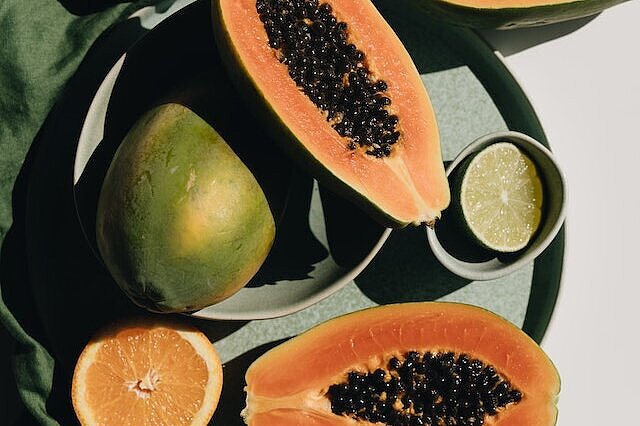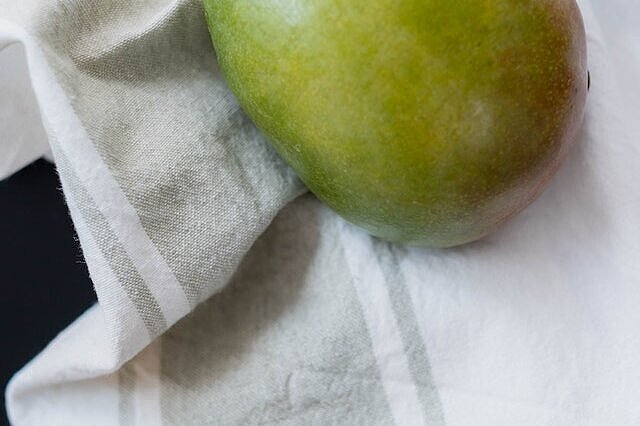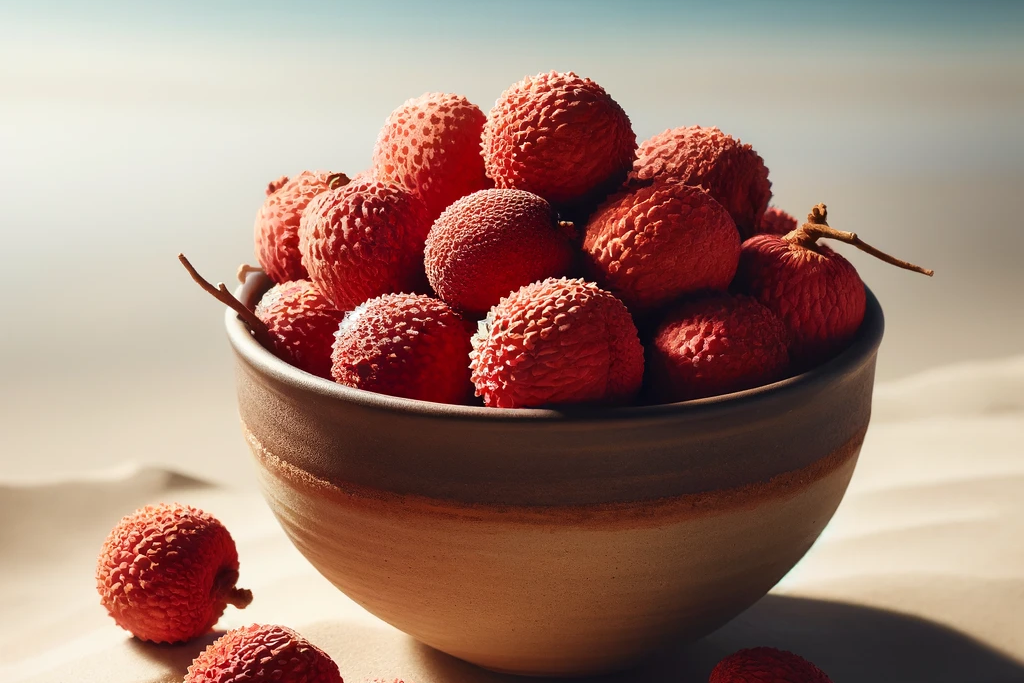Persimmon

What is persimmon?
Persimmon is a tropical fruit that originates from Asia and is also known as sharon fruit or persimmon. It has an orange color and a round or oval shape. It tastes sweet and juicy and has a soft texture. Persimmons grow on the persimmon tree, which belongs to the ebony family. There are around 500 different types of persimmon grown in different regions of the world.
Is persimmon healthy for dogs?
Persimmons have many health benefits for dogs, as long as they are fed in moderation. Persimmons are rich in vitamins A, C and E, which can boost the immune system and promote eye and skin health. Persimmons also contain potassium, which is important for regulating blood pressure and supporting muscle function. The fiber in persimmons can help improve dogs' digestion and prevent constipation.
Are there any risks with persimmons for dogs?
Although persimmons have many benefits for dogs, there are also some risks to be aware of. Persimmons contain high amounts of sugar and can cause digestive problems if consumed in excess. The seeds of the fruit can also pose a choking risk and should be removed before feeding them to dogs. In addition, dogs that suffer from diabetes or are sensitive to sugar should not be given persimmons.
How much persimmon can a dog eat?
Persimmons are safe for dogs as long as they are fed in moderation. An excessive amount of persimmons can lead to digestive problems as they are rich in fiber. It is recommended that dogs should not get more than 10% of their daily diet from fruit and vegetables. For an average dog, this means they should eat no more than half a persimmon a day. It is important to monitor the amount of persimmon a dog receives and if there are signs of digestive problems, reduce the amount or stop feeding persimmons altogether.
How to prepare persimmons for dogs?
Persimmons should be thoroughly washed and peeled before feeding, as the skin can be difficult to digest. The seeds should also be removed as they can pose a choking risk. The fruit can then be cut into small pieces or pureed. Persimmons can be fed raw or cooked. Some dogs do not like the taste of persimmons as they contain tannin, which has a bitter taste. This is particularly strong in unripe fruit. Therefore, only ripe and sweet persimmons should be given to dogs.
Persimmons are a tasty and healthy fruit for dogs, as long as they are fed in moderation. They contain many vitamins and minerals that can boost the immune system and promote eye and skin health. They also contain fiber, which can improve digestion. However, you should be aware that persimmons also contain a lot of sugar and can lead to an upset stomach if eaten in excess. The seeds should also be removed as they can pose a choking risk. Persimmons should be washed, peeled and cut into small pieces or mashed before feeding. Only ripe and sweet persimmons should be given to dogs, as unripe fruit contains tannin, which has a bitter taste. Persimmons can be fed raw or cooked. If you follow these tips, you can offer your dog a persimmon as a healthy snack from time to time.
If you notice any signs of hypersensitivity or poisoning in your dog, you should see your vet immediately. We are not a substitute for a vet, but we try to be as accurate as possible. Every dog reacts differently and we recommend you get a second opinion or consult your vet if in doubt.
Stay healthy and take good care of your four-legged friend!😊
Similar to Persimmon
Papaya (Carica papaya) is the only species of the plant genus Carica within the melon tree family (Caricaceae). The plant is often referred to as a tree, but is actually a large, herbaceous plant...
What is a mango? A mango is a stone fruit that grows on a tree. It has a yellow to orange color and a sweet taste. The skin of the mango is not edible and must be removed. There is a large pit inside...
The lychee tree, also known as Litchi chinensis, is an evergreen tree from the soap tree family known for its sweet and juicy fruit. However, before we get into the details of how this exotic tree...
Figs are the fruit of the fig tree, a plant from the mulberry family. They are oval or pear-shaped and have a greenish, brown or purple skin. Inside there are many small seeds surrounded by soft,...



